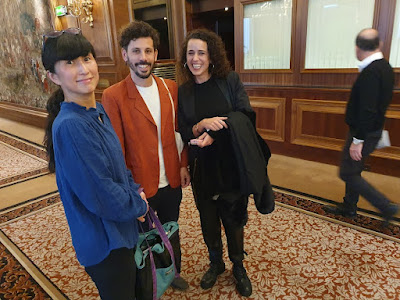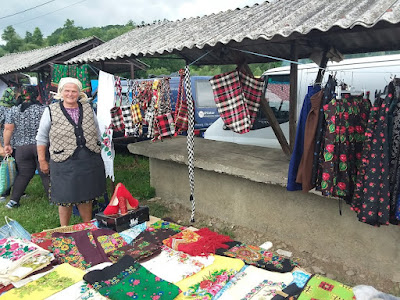Who even reads blogs anymore? Ok, you do, obviously, but the Golden Age of blogging joined the fate of the Wooly Mammoths over a decade ago with the ascendancy of Tumblr, Facebook, Insta, TikTok, and Twitter (now known as Elon's Edsel.) Users of social media no longer consume prose. They like captions, blurbs, viral visuals. Its a trend that I discovered back when working as a print journalist. Publishers began demanding blurbs, not feature articles. More photos, less words. Small local newspapers fell like flies. Finally, Capitalist God declared a pox on all their houses, and print media - along with its modest paychecks - went the way of the ocelot (i.e: its still there but you can't see it.)
 |
| Gone but not forgotten |
I began blogging back in 2004 after reading a NewYorker article while flying from NY to Budapest. Thought I'd give it a try. It was an easy way to keep in touch with friends and share photos and stories of our first trips to Istanbul, where Fumie was working as a photographer for Time Out travel guides, (a great travel series that was eventually replaced by an ingominous "app".) And then I kept it up. The end result is that I have a non-comprehensive diary of various crap that I engaged in for the last twenty years. I have visual documentation of nearly every pastrami sandwich I have eaten in the last two decades.
I used to write for and edit the culture section of Budapest Week - Hungary's first privately run English language weekely newspaper begun in 1991. The saga of BP Week remains to be written, perhaps someday when all the bodies are finally buried, but suffice to say I enjoyed being read by a few thousands of folks weekly - folks I would often meet later at then flourishing Budapest alternative bars like Tilos Az A, the Raczkert, Picasso Point, and the unforgettable bar "A Széklet" ('the stool sample.') There was evidence that real flesh and blood people read the stuff that I - under numerous assumed names and aliases - wrote.
This was often pleasant, and when it wasn't, it didn't matter because by then I was drunk and belligerent. But I really liked knowing who was reading me. It felt like real communication. Later I wrote for email newslists, magazines, travel guides, even a series of educational readers for American teens. Blogging was like my personal writing excercise space. But in the glory days I could clock in over a thousand readers a day. Nowadays, readership rarely hits double figures.
 |
| Perhaps my masterpiece |
Budapest Week folded due to gross mismanagement and fraud, and subsequent attempts to revive it failed due to gross incompetance but mainly fraud. Most of the publishing industry in Hungary fails due to corruption and fraud. Heck, we can extend this to explain the failure of business in Hungary in general - note that Hungary has recently slipped behind Romania in the lower rungs of economic vitality in the European Union. Does this sound like a swan song to blogging? A dear John letter to blogspot? Naaaah... not happening. I am way too narcissistic to shut up entirely. I simply do not update the blog every three days like I once did. I'm older and time moves more slowly. My advancing dotage no longer merits the kind of adventure that I once spent so much time pursuing. (To quote the song: "Its getting to the point where I'm no fun anymore. And I am sorry.")
 |
| My idea of fun |
 |
| One of my lesser known works |
People ask why I remain in Budapest. My answer is that much of what originally drew me here is still here. I arrived at the end of communism, so I am used to living under a deeply cynical incompetant government that has no program except the maintanance of its power. The extreme polarization that characterizes Hungarian politics and social life is not of my making. I only live in it, but I am not of it. What really kept me here were my friends, mostly folk musicians, and the traditional music that consumed their lives. Although that music is mostly found in Transylvania, across the border in Romania, I have lived most of my adult life in Budapest and this is the city I call home. I like the food, although I no longer enjoy it as I once did (I lost a lot of weight this year by avoiding carbs, and that includes bakeries.) I can finally ride the metro for free! I can get Serbian radio on AM. And I do not watch Hungarian TV, for the same reason I do not watch professional wrestling. I can live my life without Kayfabe. I like the real thing, and I know where I can find it.
 |
| Ioan "Nuku" Harleț. Budești, Romania. It don't get realer. |
This said, I can happily get on a plane next week and fly off to Istanbul, the city where this blog began 18 years ago. My son is coming to meet us there and I can't wait to take him around to places where the public bathroom may well have been built in Byzantine times, where the lowliest kebab shop is better than the best food in London, and where the best roast lamb on the face of the planet can be found (the Kadinlar Pazar in Fatih!) So expect a bit more from the blog in the weeks ahead.



















































